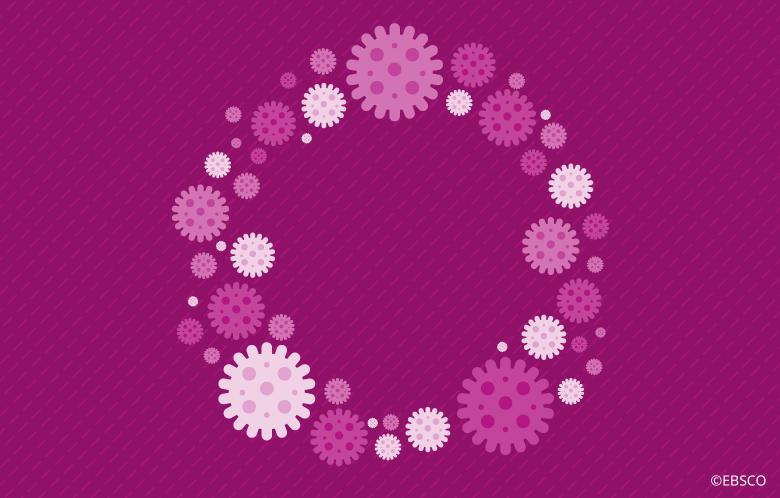

Contents
- 1 1. How is Omicron different from other COVID variants and where did it come from?
- 2 2. How contagious is the Omicron variant?
- 3 3. Does Omicron cause milder COVID-19?
- 4 4. Can Omicron evade immunity from vaccination or infection?
- 5 5. Can Omicron evade therapeutics such as antivirals and monoclonal antibodies?
1. How is Omicron different from other COVID variants and where did it come from?
Omicron is the most heavily mutated of all the SARS-CoV-2 variants that have been classified to date. With more than 50 mutations, including 30 in the spike gene, speculation was high that these mutations would impact infectivity and immunity, leading the World Health Organization (WHO) to classify Omicron as a Variant of Concern (VOC) before it even met their own definition of VOC.
The earliest confirmed cases of Omicron were identified in South Africa and Botswana in early November 2021. However, it is unclear where it started or how this variant evolved. Unlike previous variants which accumulated a few mutations from one of the circulating strains before branching off into their own factions of the SARS-CoV-2 family tree, Omicron’s closest relative is a SARS-CoV-2 virus circulating in early-2020.
The timing of Omicron’s evolutionary branch and staggering number of mutations is difficult to explain. A leading hypothesis is long-lasting infection of a single host such as an immunocompromised individual that accumulated many mutations before spreading to others. Another possibility is that Omicron arose in an animal reservoir followed by spillover back into humans, though this would most likely have left genetic traces that are not present in the variant. As of now, it’s not clear where Omicron came from.
2. How contagious is the Omicron variant?
Whenever a new viral variant emerges in a population, enhanced transmissibility is a likely factor. Epidemiologic tracking of Omicron has shown spread more quickly than any other variant thus far, supporting this hypothesis. As of the end of 2021, Omicron has been detected in more than 100 countries and is currently the dominant variant in several countries including the United Kingdom and United States.
Contagiousness is influenced by several factors including the ability of the virus to infect and replicate in cells and shed from infected individuals. Researchers in China found that Omicron replicated 70 times faster than Delta in bronchial tissue cultures, but 10-fold slower in lung tissue cultures. Pathogenesis studies in a mouse model confirmed these findings and now several other studies support these data. While these experiments were conducted in a lab (not in people), they may suggest that one factor in Omicron’s enhanced transmissibility is better viral growth in the upper respiratory tract. Intriguingly, this data also suggests that Omicron may be less likely to cause pneumonia in the lower respiratory tract, which could factor into question #3 below.
3. Does Omicron cause milder COVID-19?
This was a prevalent conclusion before any data emerged regarding the clinical presentation of patients infected with the Omicron variant. While cases were on the rise in South Africa throughout November 2021, hospitalizations and deaths were not elevated, suggesting a milder form of COVID-19. However, this question should not be answered solely by epidemiology, that is, by tracking COVID-19 cases and proportion of Omicron in a region. It must be evaluated clinically on an individual level where other factors such as vaccination and prior infection can be accounted for.
It would be expected that if Omicron is able to evade some immunity (see question #4), it would cause more reinfection and breakthrough infection cases, which would then result in fewer hospitalizations and deaths. While community (herd) immunity at a level that eliminates transmission will not be attained for this virus, this is the first sign of the tipping point we’ve been waiting for. When most of the population has some level of immunity to this novel coronavirus, it is immunologically no longer “novel” and thus less likely to cause life-threatening disease.
This is an important distinction because it means that Omicron infection may be as severe for older people, patients with immunocompromising conditions, as well as those without prior immunity (either from vaccination or infection) — including many children worldwide. Therefore, it is important to continue striving to reduce risk and slow the spread to protect the most vulnerable.
4. Can Omicron evade immunity from vaccination or infection?
Numerous studies have now evaluated the ability of antibodies elicited by vaccination and infection with previous variants to neutralize the Omicron variant. Overall, it appears that Omicron is partially resistant to post-vaccination and convalescent sera, suggesting reduced protection from vaccination and infection. Tracking reinfection and breakthrough infection rates in areas where Omicron is now dominant appears to support these in vitro data and the earliest clinical data indicate reduced vaccine effectiveness. Importantly, the vaccines appear to retain their most important function — protection against severe COVID-19 and death.
Antivirals are drugs that inhibit growth of viruses and typically work by blocking proteins needed for viral replication such as the viral polymerase. Currently three classes of antiviral drugs are authorized for patients with COVID-19: remdesivir, molnupiravir, and nirmatrelvir/ritonavir. Early in vitro data suggests that each of these drugs retain antiviral activity against Omicron.
Monoclonal antibodies, in contrast, target the viral spike protein and prevent the virus from infecting cells. Currently four classes of monoclonal antibodies are authorized for patients with COVID-19: bamlanivimab/etesevimab, casirivimab/imdevimab, sotrovimab, and regdanvimab (authorized in Europe).
Because these antibodies are monoclonal (mono = one), they each only target one region of the spike protein. Single mutations that do not affect the ability of the virus to enter cells can alter the ability of monoclonal antibodies to block infection. For example, the Beta and Gamma variants had a mutation that evaded neutralization by bamlanivimab/etesevimab, but the other monoclonal antibody treatments retained efficacy. Early data suggest that Omicron may evade neutralization by several monoclonal antibodies.
Viral evolution has always been an expected feature of this pandemic, but it is impossible to predict which mutations will take hold, let alone what the clinical and epidemiologic ramifications of such changes will be. Omicron was an unexpected branch low on the trunk of the SARS-CoV-2 evolutionary tree, but whether it reaches for the sky to produce generations of dominant variants or just stops growing…only time and continued genetic surveillance will tell.”
[“source=ebsco”]




